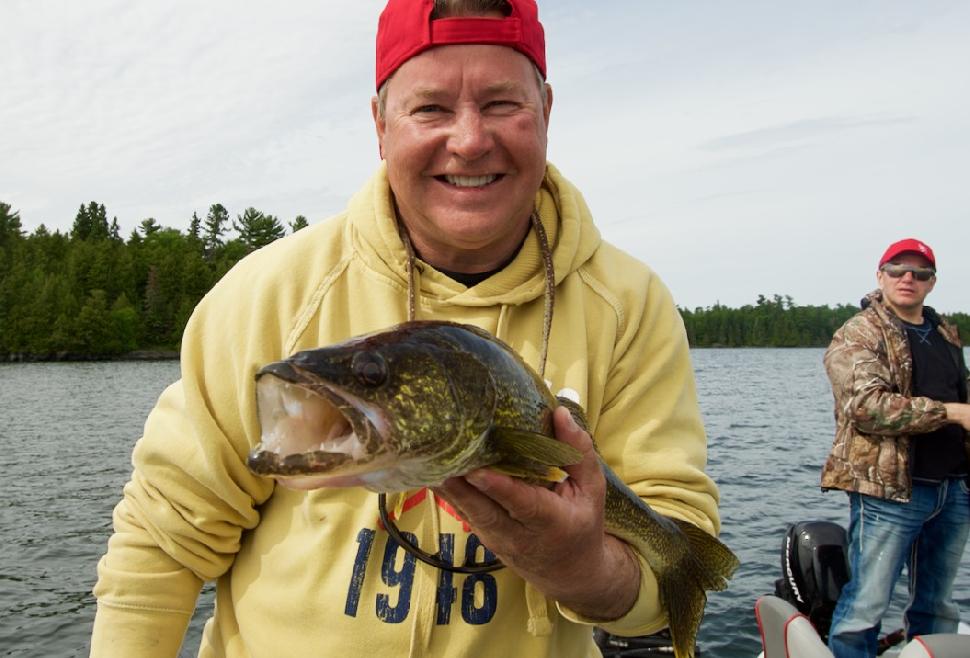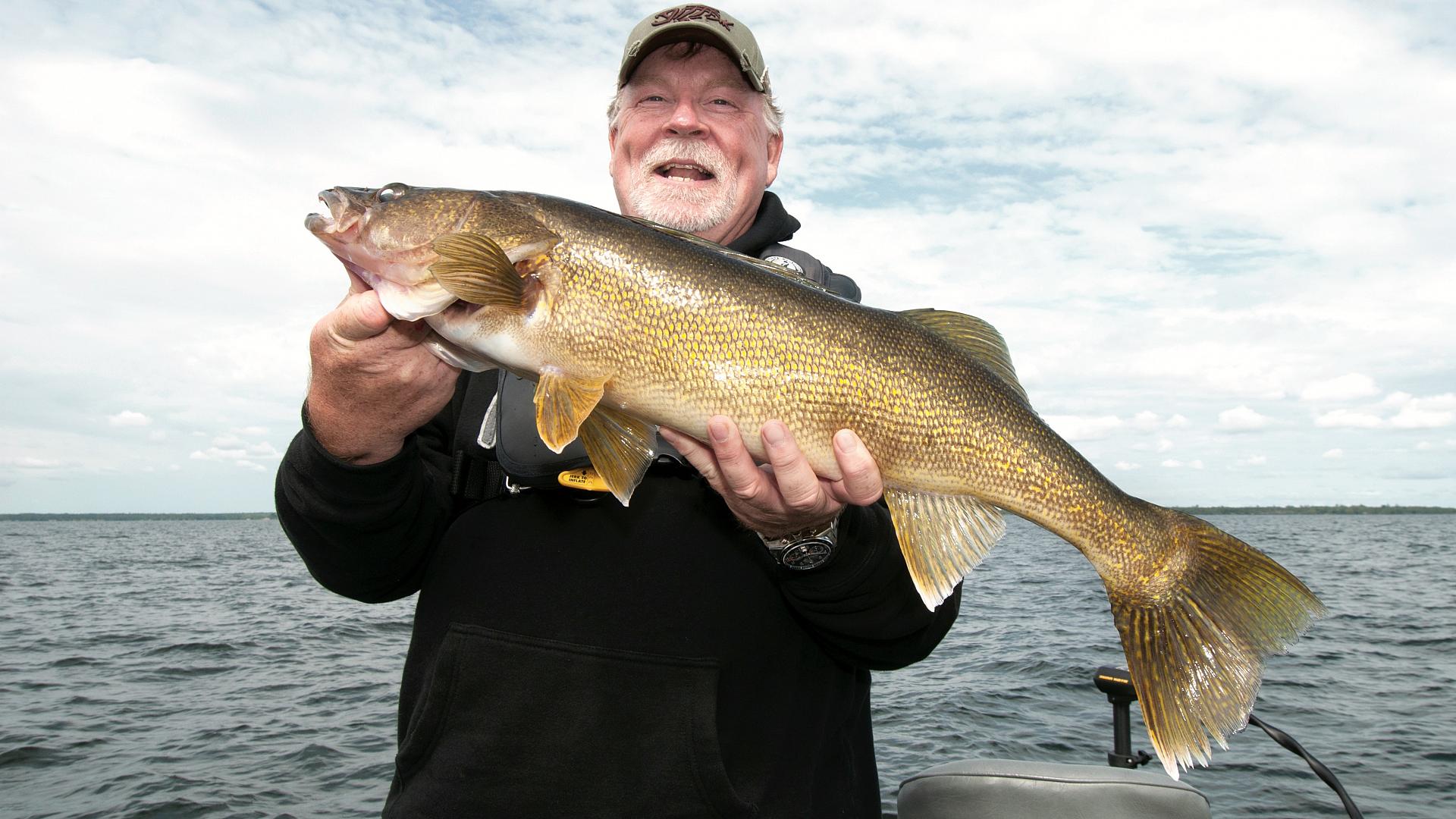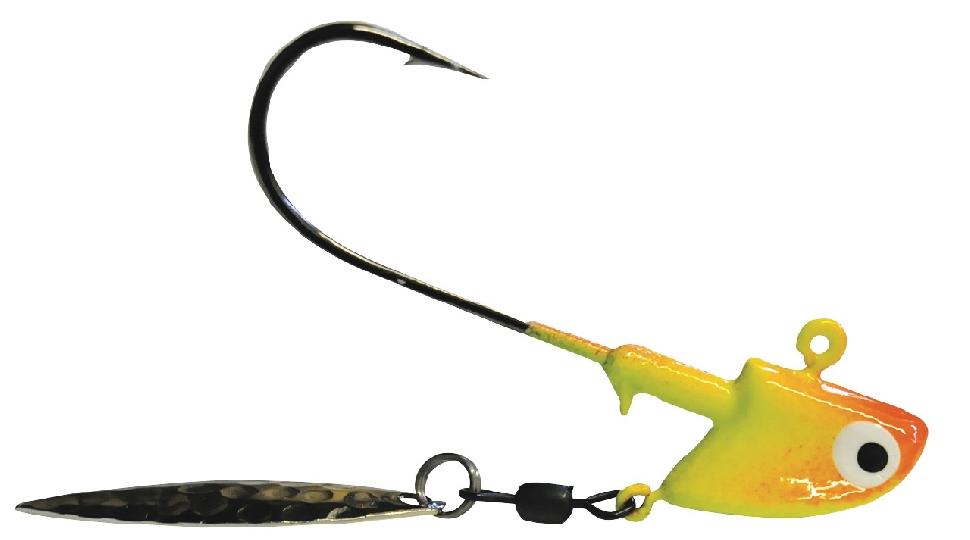Casting call
Forget jigging and trolling. Catch more and bigger walleye by casting lures
Advertisement

Go deep
Shallow-water situations aside, casting also works well in deep water, with many of the best locations being the same places where you already jig and troll. A good friend and I, for example, once located a nice school of walleye on the edge of a moderately deep reef. I marked the location with an orange buoy, then backed the boat away to a comfortable casting distance. After waiting to let the school calm down, we proceeded to make wicked walleye hay.
It all ended, however, when a passing inboard full of inexperienced anglers spotted our bright buoy (below) and mistook it as an invitation to join us. They almost swamped us with the enormous wake they threw up, motoring so close we had to shorten our casts so as not to hit them with our jigs. The ruckus immediately scattered the school and shut down the bite. (Thanks to that incident, I now carry a white seagull decoy—nicknamed “Fooler” by grandson Liam—to mark my fishing spots on busy weekends.)
Advertisement
At least finding that nice school of 18- to 24-inch walleye highlighted why it often pays to cast to your favourite walleye spots, rather than troll over them or vertically jig for them. The fish were not tightly bunched up, concentrated or confined, but rather spread out over an area roughly the size of a house.
Now, I know what you’re thinking: It sounds like the fish were primed for a trolling presentation. But they weren’t, because the physical layout was too short. Simply put, by the time you would have made a pass and pulled your lures in front of the fish, you would have had to turn around and troll back over them. That’s neither an efficient nor effective use of your time. Plus, you risk spooking the fish by never giving them a chance to calm down, even in deeper water.
We also would have risked spooking the fish if we’d parked the boat on top of them and vertically jigged. That would have been a great approach if the walleye had been more tightly concentrated, but when you find the fish scattered, you simply can’t put your jig in front of enough of their faces to make ideal use of your limited fishing time.
Advertisement
So, if the school was primed for anything, it was for casting the same jig most anglers would have used if they were vertical jigging. In such a scenario, my favourite presentation is to cast a 3/8-, 1/2- or 3/4-ounce Reel Bait Flasher Jig (above) tipped with a live bait or soft-plastic dressing, the weight of the jig depending on the water depth. I prefer this specific jig style because the willowleaf blade spins below the lead head.
Advertisement
When you cast it out and let it settle to the bottom, then slow-roll it along the bottom, bouncing off any rocks or logs, it’s the best of all possible walleye worlds. And when you cast the flickering jig to the edge of a scattered school of walleye, you can retrieve it in such a way that it flawlessly mimics a trolled crawler harness or spinner rig, even though it’s the same lure you would use for vertical jigging. Along with being able to choose the size, shape, colour, profile, vibration, smell and taste of the offering, there’s never a moment during the entire retrieve when you’re not in control of the depth and speed.


